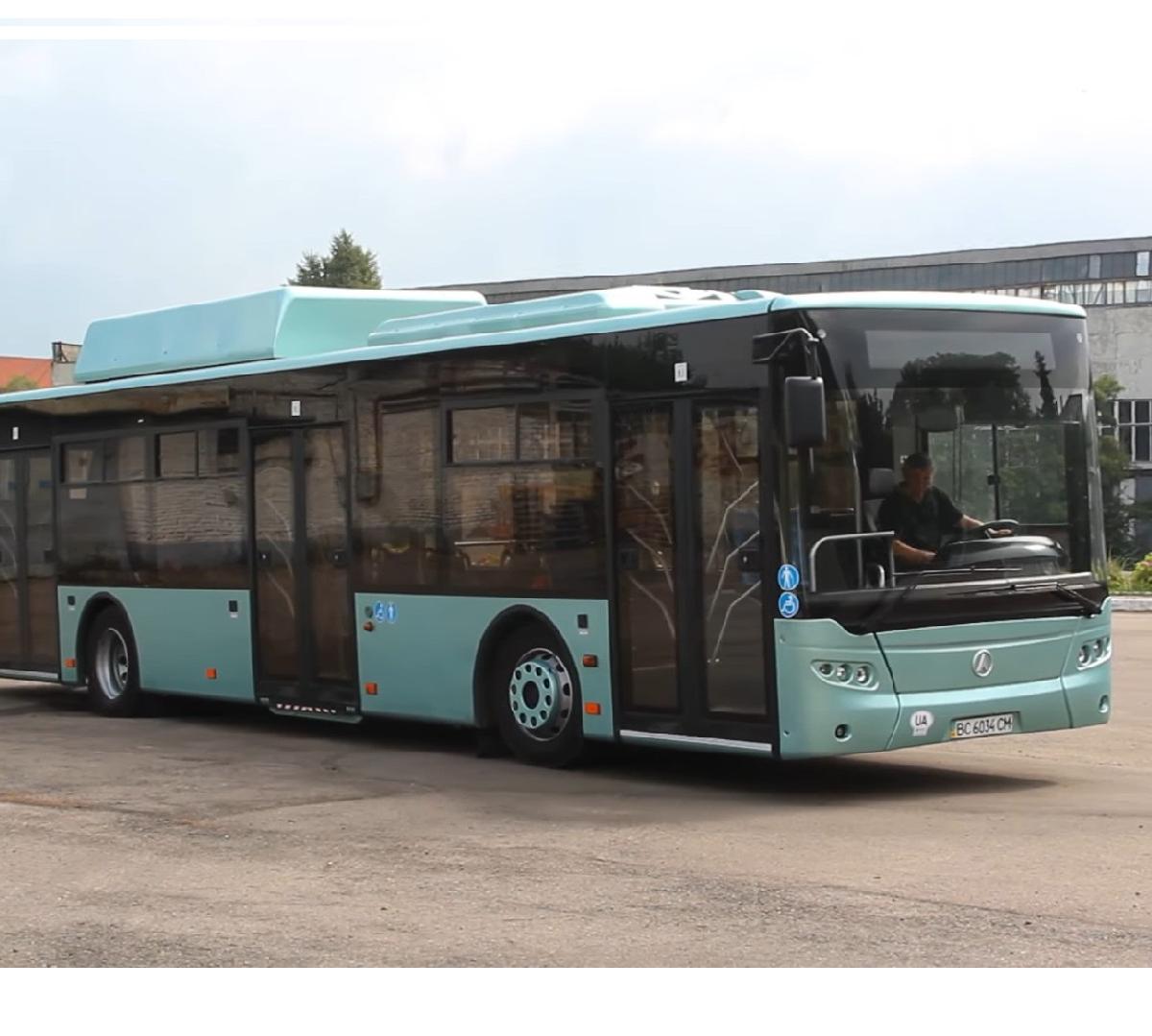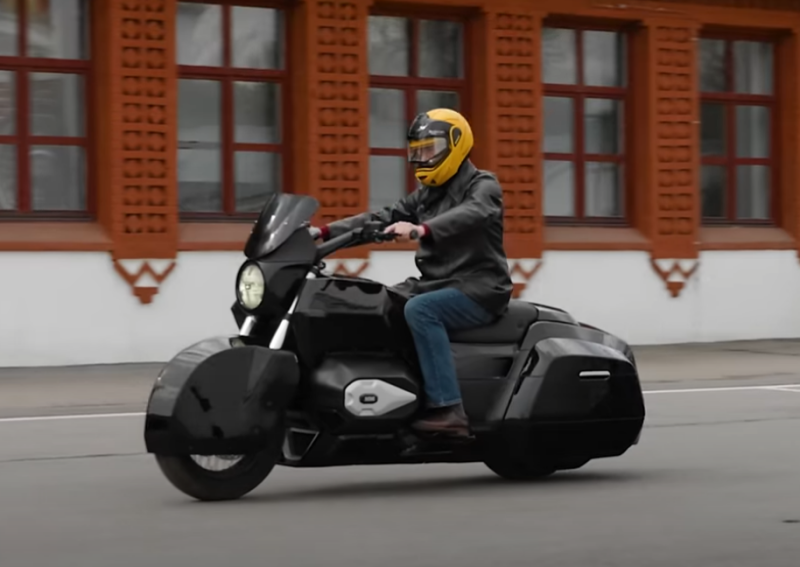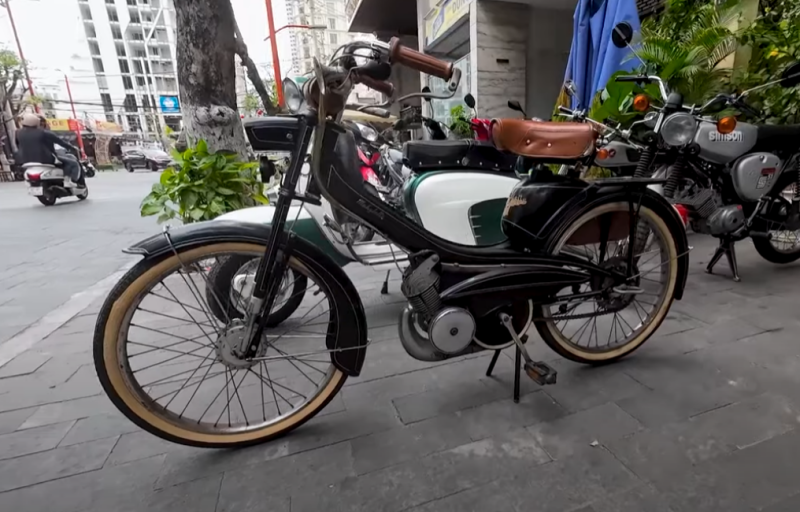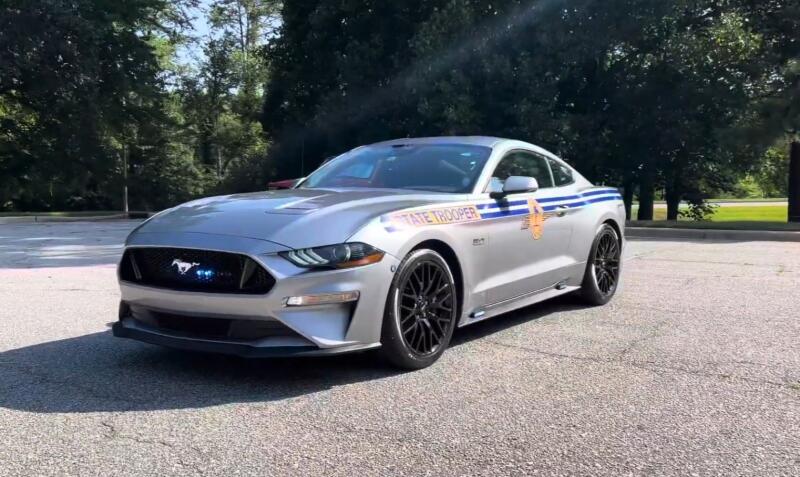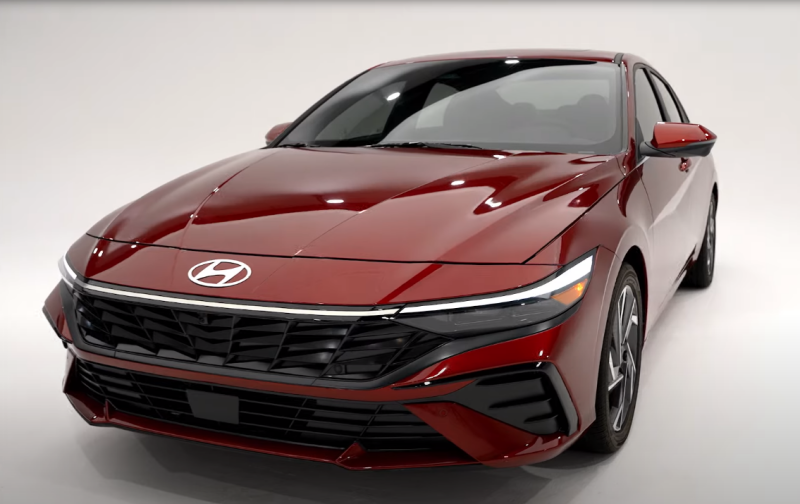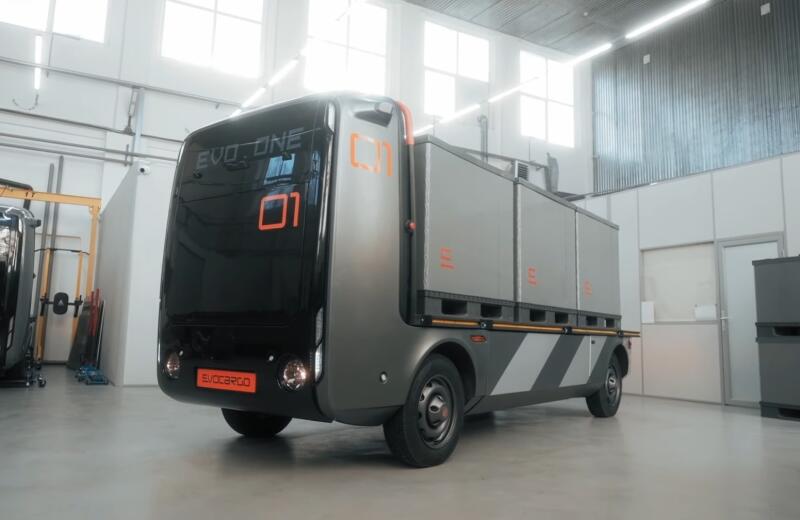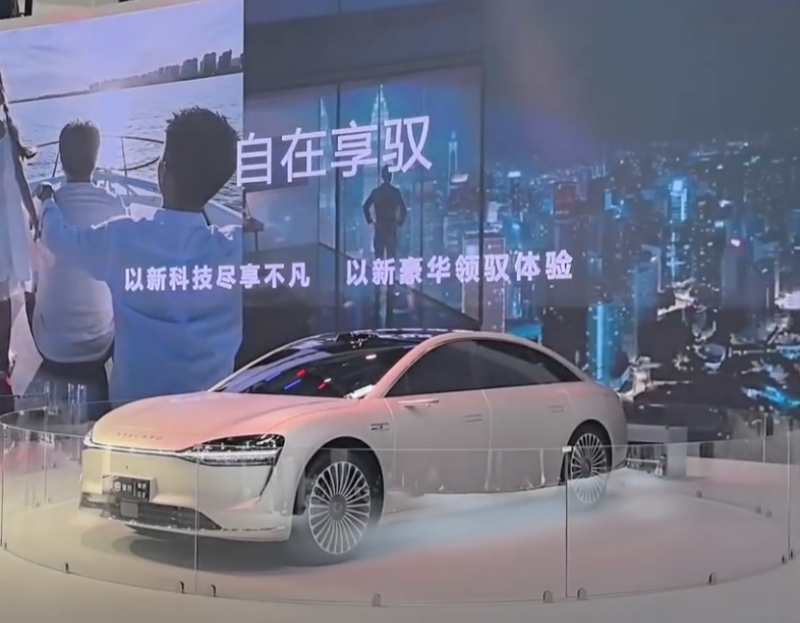In late Brezhnev times, it was already called VKEIavtobusprom. The experimental design profile allowed Lviv specialists to have greater freedom in terms of creativity and to advance much further than their colleagues. An excellent confirmation of this is the country's first low-floor bus project.
 Prototype of 4-axle LAZ-360E. Photo: youtube.com
Prototype of 4-axle LAZ-360E. Photo: youtube.comThe leading engineers of the institute came to understand the prospects of this direction in the mid-60s. Therefore, by the end of the decade, an experimental low-floor LAZ-360 was prepared. To show the seriousness of intentions and the need for a deep transformation of the country's transport fleet in this direction, several modifications were thought out:
✅ classic 2-axle version
✅ front wheel drive version
✅ 4-axle electric bus
The latest modification had the LAZ-360E index and was a rear-wheel drive electric design. This project was decades ahead of its time. After all, he was also, as they say now, a hybrid. Indeed, the design of the vehicle also assumed the possibility of movement using a conventional internal combustion engine (ZIL-375). Thanks to the smaller diameter wheelsets, the engineers managed to achieve a very low floor height, which was reflected in the numerical index of the prototype name.
The experiment with four axles assumed an increased load and a higher load capacity of the model. The 11-meter design had steerable front and driven rear pairs of wheels. In fact, all these unusual developments clearly defined the future of the model. It was out of the question that the inert Soviet system would allow the production of a hybrid vehicle, which has almost no unification with other models. We can say that it was just a concept worthy of VDNKh. And no more.
The first low-floor structure of the Ukrainian period
After the collapse of the Union, many specialists remained in Lviv. It also had the best technical and material base in the now independent country. It is not surprising that Ukravtobusprom LLC was formed here. It became the basic developer in Ukraine of new models and structural elements of bus and trolleybus equipment.
 The only copy of the "Tur-A181". Photo: youtube.com
The only copy of the "Tur-A181". Photo: youtube.comWith the usual high-floor buses, there was no need to "reinvent the wheel". Everything went according to knurled since Soviet times. Therefore, the line of "project 5252" continued its history in the 90s. With a low-floor design, things were much more complicated. Of course, there were mentioned developments. But these are just drawings and conceptual designs. A model for serial production is a much more serious development. Moreover, the depressive and penniless years of the last decade of the outgoing century were added to everything. Then everyone tried to somehow survive, and few people cared about new projects.
Closer to the "zero" it became a little easier, and in Lviv they again returned to the forgotten idea. Moreover, unlike their Belarusian counterparts, Ukrainian engineers did not use foreign experience, but turned to a 30-year-old design. It was there that Ukravtobusprom got ideas and inspiration for the creation in 1998 of the first completely Ukrainian low-floor bus.
The engineers decided that the new design should be fundamentally different from its predecessors. In addition to a more comfortable fit and ride, they offered something else. The supporting element of the novelty, called "Tour-A181", was ... the roof.
The model was originally positioned as a transport for huge cities. Therefore, the system of boarding / disembarking here is akin to a subway car. Yes, there are four doors! Moreover, the designers also took into account the peculiarity of landing passengers at the bus stop. Most of them usually accumulate opposite the middle of the bus, the smaller one - in the back and front of it. Therefore, accordingly, those doors were made in a narrow single-leaf version. And both middle ones, located inside the wheelbase, have a more spacious double-wing design.
One of the main problems in the operation of imported bus equipment in the post-Soviet space arose when it moved through railway crossings. It consisted in the insufficiency of both corners of the exit. Ukrainian designers took into account this feature, bringing the performance of this parameter to eight degrees. A 269-horsepower MAN D 0826 LUN was placed under the hood of the vehicle. Its fuel consumption was about 23 l / 100 km. There was also ABS and a German gearbox.
 28-seat salon "one hundred and eighty-first". Photo: youtube.com
28-seat salon "one hundred and eighty-first". Photo: youtube.comPerfectly took into account the ergonomics of the cabin. During the urban cycle, there is a minimum length of movement and a maximum (especially during peak hours) workload of the passenger compartment. Therefore, the "Tur-A181" has a total of 28 seats and storage areas near each of the doors. This made it possible to bring the total capacity to 124 passengers (critical and even reaches 160 people). Many design features contributed to the convenience and durability:
✅ low-alloy steel anti-corrosion body
✅ the use of adhesive joints in body parts
✅ air suspension with power reserve (front - independent)
It also allowed the floor height to be adjusted by +/- 5 cm. This created additional convenience when boarding / disembarking passengers who are wheelchair users. The new prototype received the most flattering reviews at the Autotech-98 exhibition.
Despite this, mass production never started. And the main reason was not the economic component, but changes in society. Bus facilities of large cities, one after another, passed into private hands. And the new owners intended to count every "penny". Therefore, they no longer needed huge and uneconomical "sheds". Nimble minibuses, which began to be purchased by businessmen with enviable constancy, were better suited for this role.
 In LAZ-E181, previous developments were used. Photo: youtube.com
In LAZ-E181, previous developments were used. Photo: youtube.comI remember advertising those times on the local TV channel. Like, old buses both smoke and uneconomical. But comfortable and modern transport is a completely different matter! Therefore, the fate of the only "Tur-A181" was rather banal. After successfully passing the tests, it was transferred to the balance of the Lviv airport. Here, to this day, it is used as an apron bus.
In 2006, they tried to implement a promising project in Dnepropetrovsk. However, YuMZ-A181 was also released in only one copy, which today serves as a factory special transport at Yuzhmash. But the ideas of Lviv engineers helped in the design of the popular UMZ-E186 trolleybus brand.
Modern low-floor buses LAZ
Despite the negative experience, the designers of "Ukravtobusprom" did not stop trying to create new projects. So in 2004, the low-floor LAZ-A183 (CityLAZ-12) and the ElektroLAZ-183 trolleybus appeared. The production of 12-meter city transport began at the Lviv plant, and since 2015 it has been transferred to Dneprodzerzhinsk. It is still produced there today. There are five modifications, the most popular is "D1" (415 buses). The total capacity is 120 people, the number of seats varies from 24 to 32 pieces. The model has a shorter (10-meter) version of the "A152".
 LAZ-A183 produced more than five hundred pieces. Photo: youtube.com
LAZ-A183 produced more than five hundred pieces. Photo: youtube.comEight pieces of AeroLAZ for airfield facilities were also produced. They have structural differences from other modifications in the form of doors and interior. Due to the appointment, the number of seats located at the beginning and at the end of the passenger compartment has been reduced to 17 pieces. The total capacity is up to 140 people. There are also provisions for the carriage of wheelchair passengers and ramps for moving heavy carry-on luggage.
The last years of the company's history turned out to be very sad. It rapidly fell into decay, stopping the production of any equipment. The workshops began to collapse, and part of the LAZ territory went under private and commercial development. Since 2013, the production of buses has been transferred to the Dnepropetrovsk Bus Plant.
